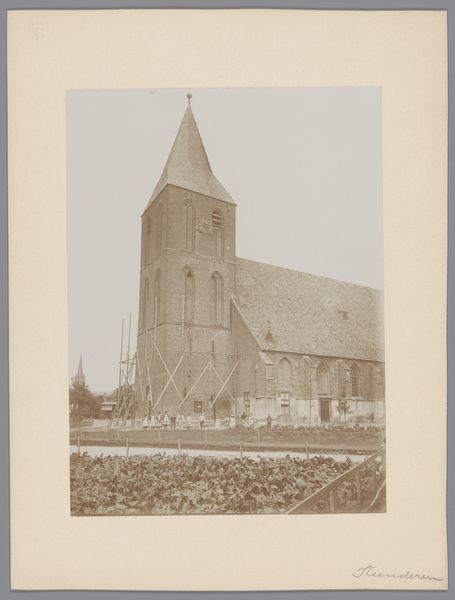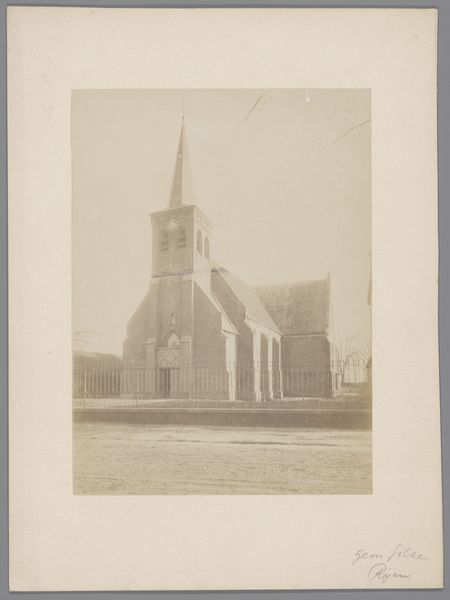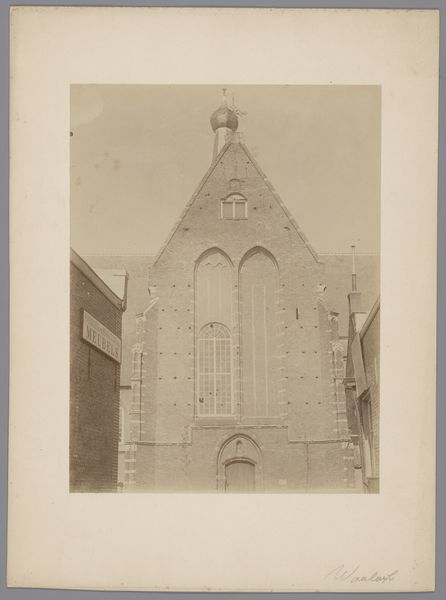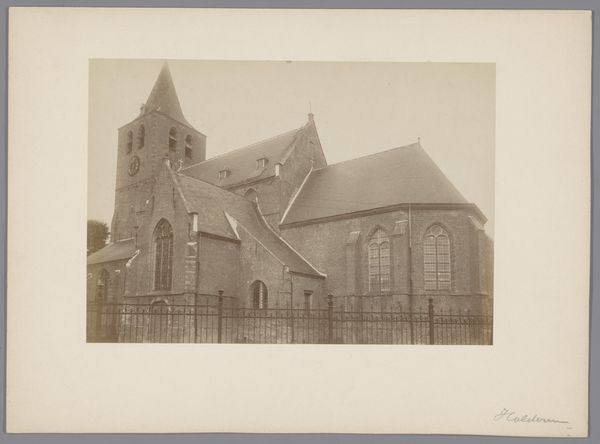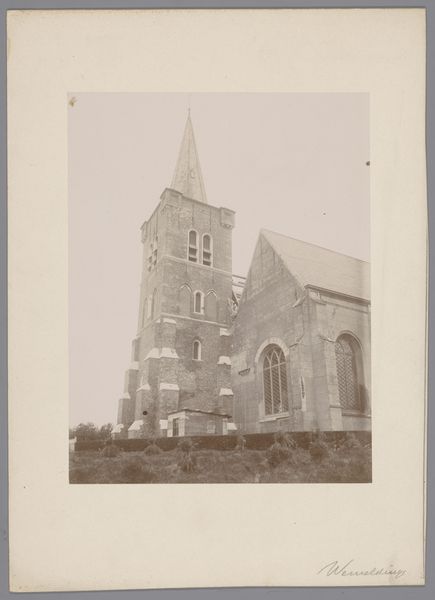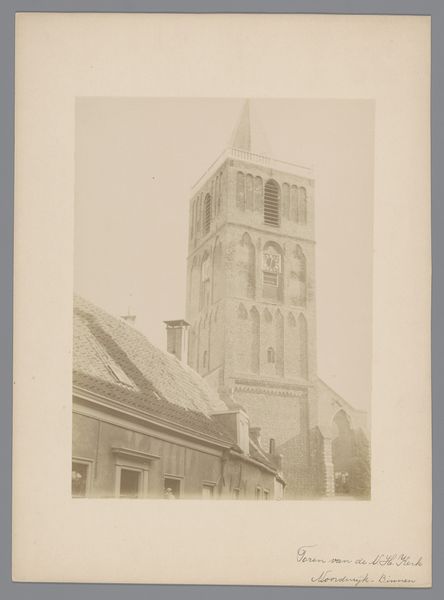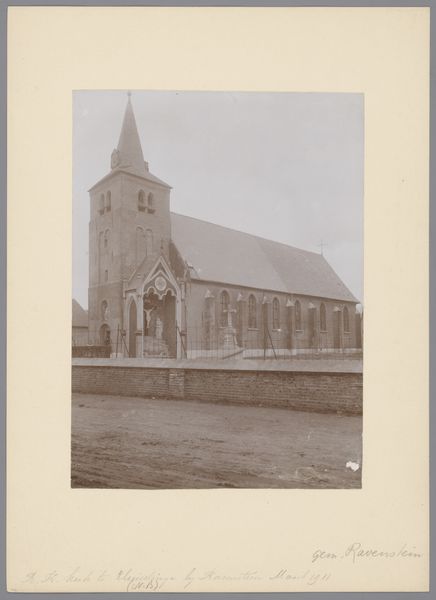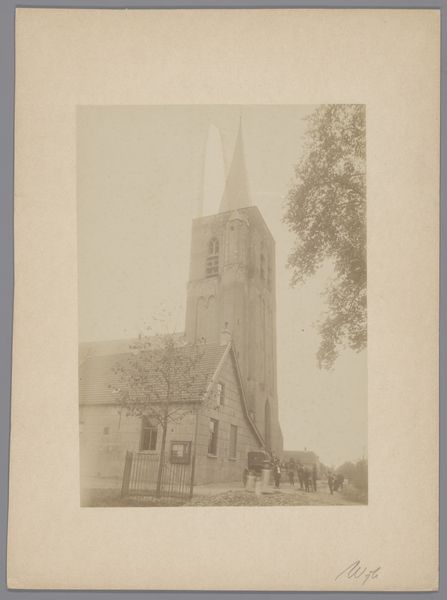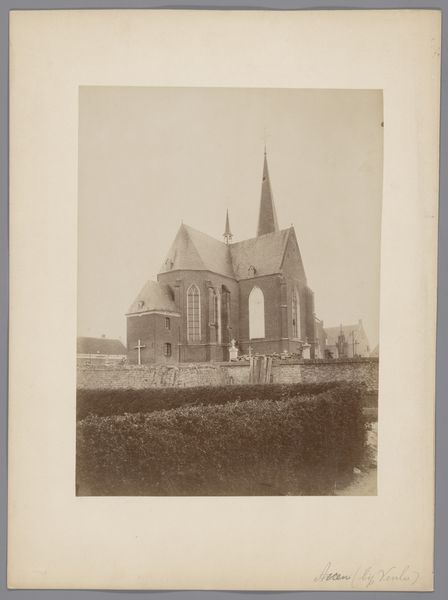
Dimensions: height 230 mm, width 172 mm
Copyright: Rijks Museum: Open Domain
Editor: Here we have a photograph, titled "Toren van de Grote Kerk te Vianen," dating from somewhere around 1890 to 1920, created by an anonymous photographer from Monumentenzorg. It has a lovely sepia tone and a kind of stoic quality, showing the imposing church tower. What catches your eye about this image, from a historical perspective? Curator: Well, immediately I see the relationship between the Church, its visual dominance within the community and, implicitly, its power. Notice how the photographer chose to position the camera – looking upwards, emphasizing the height and scale. Why do you think that might be? Editor: Perhaps to instill a sense of awe or to document its grandeur for posterity. I suppose photographs of the time were a method of civic pride? Curator: Exactly! Photography here serves a dual purpose – documentation and promotion. Think about the rise of photographic societies around this time. Images like these contributed to a narrative of national identity and the preservation of cultural heritage. It makes you consider the role of institutions like Monumentenzorg – who chose what to photograph, and what stories were they telling? Editor: So it is more than a simple recording. It is more complex; a deliberate decision about representation? The photograph serves a larger socio-political purpose? Curator: Precisely! Consider what isn't in the image, too. Who doesn't get represented, what sort of life is erased from view? These omissions speak volumes. Editor: That’s fascinating. I hadn't considered the unsaid elements within a seemingly straightforward architectural photograph. Curator: Understanding that silence helps us understand the history so much better! I find myself wanting to visit this town now. Editor: Me too. The power of a photograph, even one this old!
Comments
No comments
Be the first to comment and join the conversation on the ultimate creative platform.

